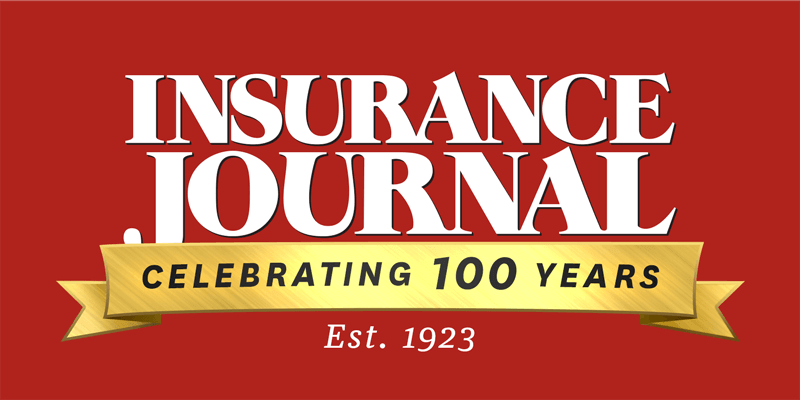New cannabis products like gummies, drinks and new consumables bring the promise of exponential growth and the normalization of public consumption, promising to significantly reshape the business landscape for insuring cannabis specialists.
Four industry experts recently gathered for an Insurance Journal panel discussion that centered on emerging markets and the state of insuring cannabis and hemp businesses. Though the participants had unique perspectives, they seemed to agree: Brokers must be wary of vendors’ transparency and product testing – as well as the regulations that apply to these emerging goods.
Edibles
A common theme throughout the panelists’ conversations was the need for reliable quality and consistency in the creation and sales of edible products. In a nutshell: Potential negative social impacts present risks and opportunities.
“It’s a double-edged sword in my opinion,” said Alex Buschmann, cannabis practice leader at Risk Strategies Company. “Because it’s a ridiculously booming segment in the cannabis industry that’s not going to go anywhere. But being able to put those protocols in place is something that everyone’s going to have to figure out pretty quick.”
Charles Pyfrom, chief marketing officer at CannGen Insurance Services, highlighted the importance of advising clients to be mindful of packaging and imagery. Fellow panelist Erich Schutz, vice president and cannabis practice leader at Jencap Specialty Insurance Services, expanded on that point, saying having products that look like kids’ products is a “huge issue.”
“And that is most prevalent in the hemp space,” he added. “You see it in the cannabis space, but it’s really the illicit cannabis. Because it’s not lawful.”
Hemp-derived Delta 9 gummies are a “hot button,” Schutz explained. This stems from the lack of regulation and controls in the hemp space, yielding what is essentially a self-policed market that creates variability.
“Variability concerns underwriters,” Schutz said, “and that translates to a limited marketplace for those types of products.”
Drinks
The global market size for cannabinoid-infused beverages is poised to grow exponentially in the coming years. Buschmann believes these drinks will take up a big space in the cannabis world because they appeal to consumers who may not be comfortable smoking a joint or want an alternative to alcohol.
“Maybe having a 10-milligram THC-infused seltzer water is something that’s more up your alley,” he said. “In my opinion, it’s more social.”
It’s also a scientifically different high. Schutz explained that gummies and other edibles enter the bloodstream through the liver, while drinks absorb immediately after hitting the tongue and esophagus. This creates a different user experience.
“And that’s why you see a lot of the low-dose products that are coming out in lounges and that are going to be more prevalent as cannabis consumption in public spaces becomes normalized and more prevalent,” Schutz said. He has been seeing beer brewers carve out sections in bottling facilities to create secured cannabis operations.
Other Opportunities and Risks
The creativity that abounds in the cannabis and hemp spaces opens the doors to new markets.
“I think there’s a different product for everybody,” Buschmann said, “and what they’re feeling and what they’re comfortable with. So, the more the merrier when it comes to these products that are actually following the rules and doing it the right way.”
While much attention was given throughout the webinar to the current risks associated with hemp, Schutz highlighted how the legal hemp sphere’s lack of regulation allows innovators to do “a lot of things that you can’t do in the regulated cannabis space.” This idea incubation could trickle into cannabis. “I think that space is where we’re going to see different novel products,” he continued. “Inhalers, vaporizers – different routes of administration.”
White the U.S. Farm Bill federally legalized hemp in 2018, from an underwriting perspective, the hemp insurance marketplace is limited. In the beginning, Schutz said underwriting forms were either “overly broad or overly restrictive.” One example he shared was a market that tried to intentionally write Delta 8 products. Delta 8 vaporizers were included in the business description at the top of the quote – but the forms included a THC exclusion that contradicted the description.
“On the other side, there were just no forms, and people lost their shirt in the early days,” Schutz said. “And that’s why some of the big domestic carriers that were around 10 years ago haven’t dabbled in it since.” Schutz’ advice to brokers: Read the forms. Find a knowledgeable partner. Build a team of trusted advisors.
Was this article valuable?
Here are more articles you may enjoy.



 Chubb Loses Bid to Enforce D&O Coverage Exclusions in Opioid-Related Case
Chubb Loses Bid to Enforce D&O Coverage Exclusions in Opioid-Related Case  Police Respond to ‘Chaos’ as Florida Condo Owners Outraged Over Insurance Fees
Police Respond to ‘Chaos’ as Florida Condo Owners Outraged Over Insurance Fees  Unusually Warm Atlantic Ocean Is Supercharging Hurricane Idalia
Unusually Warm Atlantic Ocean Is Supercharging Hurricane Idalia  Farmers Insurance Laying Off 11% of Workforce, Citing Industry Challenges
Farmers Insurance Laying Off 11% of Workforce, Citing Industry Challenges 


